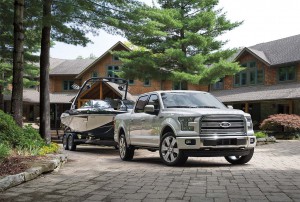
Automakers are still focused on using lighter materials and more efficient engines to meet stringent fuel economy standards coming in 2025.
Broader use of lightweight materials, such as aluminum, and ever more efficient new engines top the list of strategies the auto industry is using to meet 2025 Corporate Average Fuel Economy or CAFE standard of 54.5 mpg, according the annual Wards Auto survey of engineers from both automakers and major suppliers.
The study, sponsored by DuPont Automotive, also shows that carmakers and suppliers are taking a hard look at a variety of technologies as the mid-term review deadline looms. Interest in diesel engines, fuel cell and even bio-fuels all increased in this year’s survey.
However, transmission technologies, new to this year’s survey, and electrification form the second tier of strategies, according to the nearly 900 respondents in the automotive design and engineering community.
“Lightweighting is a universal approach because it can be applied to every system and every component and it amplifies the impact of the other strategies,” said Jeff Sternberg, technology director for DuPont Automotive. Electrification, which saw one of the largest increases in mentions this year.
“(It) is fast becoming another universal strategy. Light electrification, such as stop start, regenerative braking system and transmission and engine controls are expanding across the light vehicle fleet,” he added.
With the mid-term review of the 2025 CAFE standards scheduled through 2017, 86% of the respondents say they expect the standards to strengthen or remain the same. At the same time the major of the respondents, 87% say low gas prices in combination with low sales of fuel-efficient, low-emission vehicles will impact programs to meet CAFE regulations.
(EV owners paying more and getting less. For details, Click Here.)
“The survey responses might suggest that the industry is backing off technologies that lower emissions and improve fuel economy,” said Sternberg, “but it’s important to remember the global automotive industry has to navigate emissions regulations throughout the world, so we still need to run full-steam ahead. That said, the current market dynamic is certain to spark some lively debate during the mid-term reviews.”
The trend toward away from cars to less efficient trucks and utility vehicles was evident in the latest survey of new-vehicle fuel economy from the University of Michigan. The fuel-economy ratings of new vehicles sold in the U.S. remained unchanged in July, according to researchers at the University of Michigan Transportation Research Institute. Average fuel economy (window-sticker values) of cars, light trucks, vans and SUVs purchased in July was 25.4 mpg.
“The fuel economy in July was unchanged from that in June, consistent with the increased market share of vehicle in the middle of the fuel-economy spectrum, such as crossovers,” said Michael Sivak, a research professor at the university Transportation Research institute. Overall, fuel economy is down 0.4 mpg from the peak reached in August 2014, but up 5.3 mpg from October 2007—the first full month of monitoring by Sivak and colleague Brandon Schoettle.
(Click Here for details on the plans for no-haggle prices by Lexus.)
The light-duty vehicle CAFE and GHG (greenhouse gas) emissions rate standards require, on an average industry fleet-wide basis, 163 g/mile of carbon dioxide in model year 2025, which would be equivalent to 54.5 mpg (4.3 L/100km) if this level were achieved solely through improvements in fuel efficiency.
The mid-term review by the Environmental Protection Agency and National Highway Traffic Safety Administration in 2016-2017 has been designed to determine technology readiness and ability to implement at acceptable cost. A final decision from the closely watched review is due April 2018.
Survey respondents again this year point to aluminum and multi-material solutions as the materials that can best help them meet CAFE standards. Aluminum was cited as the favored material by nearly one third of the respondents.
Engineering plastics and advanced high-strength steel comprise the second tier.
Respondents continued to express “moderate confidence” that today’s materials are sufficient to meet the future standards.
(To see more about Toyota’s “modest” expectations for the new Tacoma, Click Here.)
“We are pretty bullish on the impact that materials can have on lightweighting,” said Sternberg, “and new solutions continue to be introduced. But materials alone are not enough when it comes to reducing vehicle weight in the 10-15% range. Those big opportunities require fundamental changes in design, manufacturing and assembly as well. These more ‘disruptive technology’ developments are taking longer, but the work is moving forward. High volume adoption by 2025 may be optimistic for some of them, as we are just a little more than two vehicle model cycles away, but I am confident we will see an impact.”

As noted new engines and light weight materials are a necessity (at higher costs to consumers), but they still will not allow auto makers to meet the absurd 54.5 mpg CAFE requirement pulled from Obama’s and the EPA’s orifice because the figure is not based on science or reality. The drastically higher sticker prices and fines for not meeting the outrageous mpg decree should be a wake-up call to consumers.
With Obama and the EPA trying to kill off clean Diesels and promote impractical EVs, it would be really funny if U.S. auto sellers all switched to clean Diesels and met the insane 54.5 mpg requirements. That would teach the clowns in DC a lesson or two about irrational strong arm tactics that the public ends up paying for.